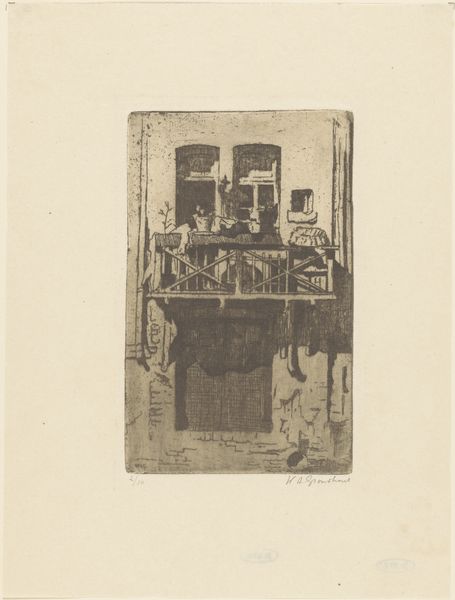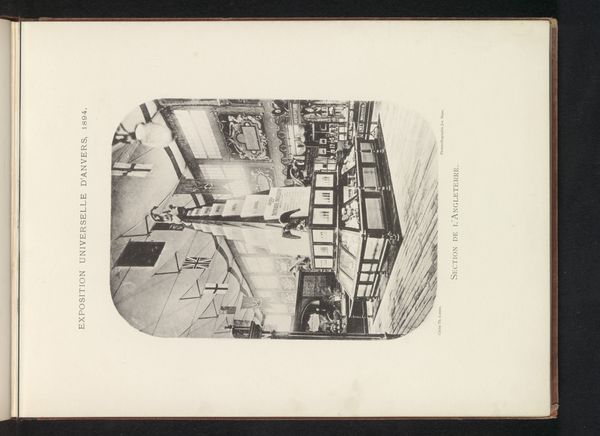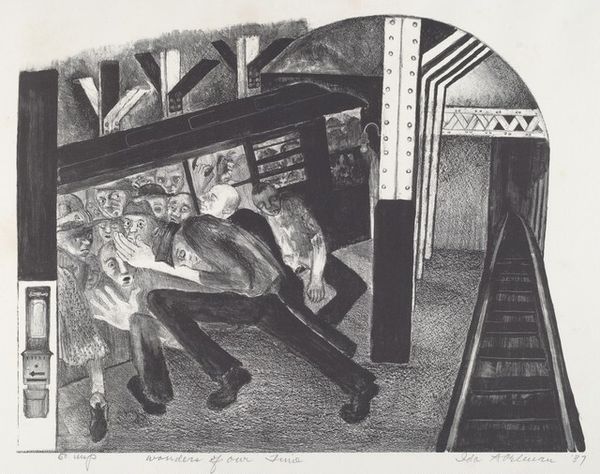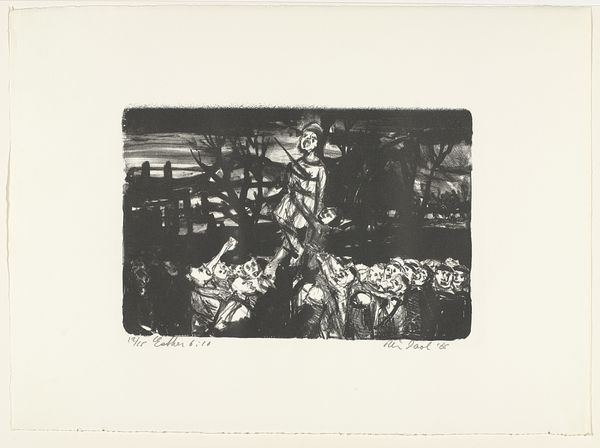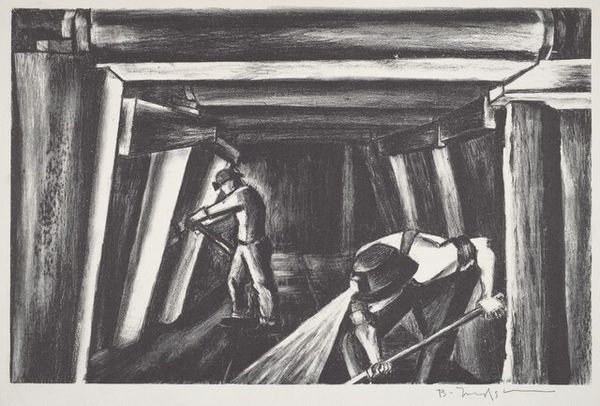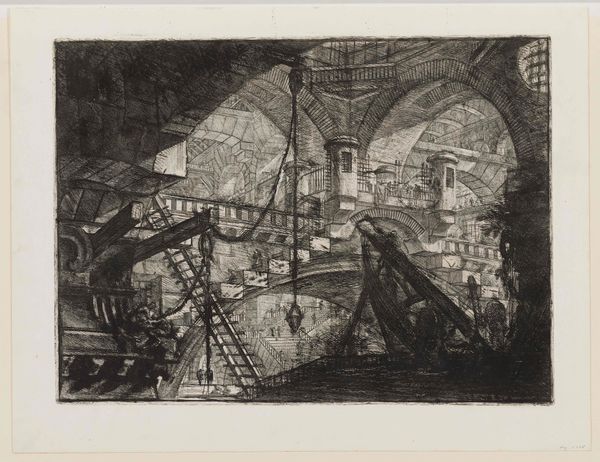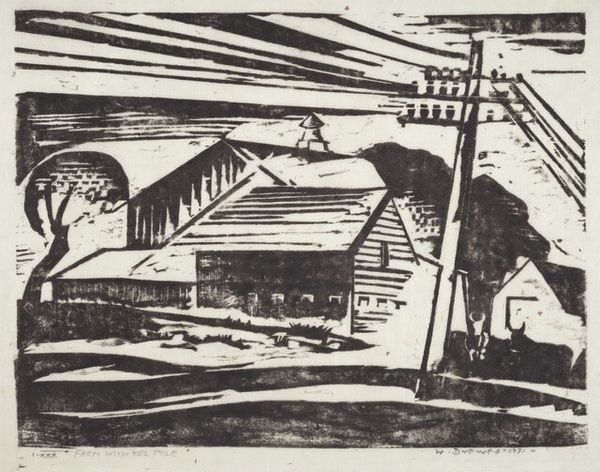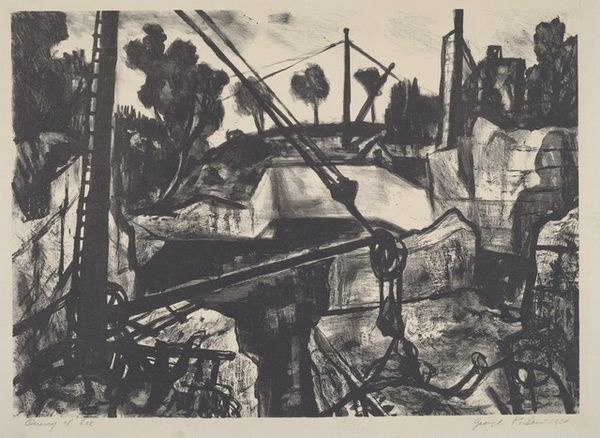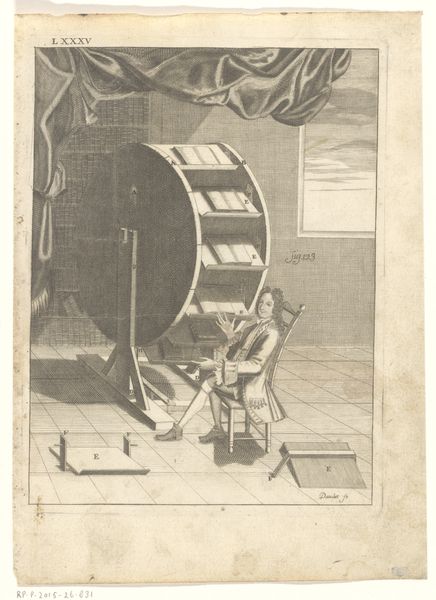
print, etching
# print
#
etching
#
form
#
geometric
#
line
Dimensions: height 395 mm, width 560 mm, height 492 mm, width 707 mm
Copyright: Rijks Museum: Open Domain
Editor: Here we have Aat Verhoog’s "Het gevallen paard van Troje," or "The Fallen Trojan Horse," an etching done sometime between 1952 and 2005. It's…certainly a deconstruction of the Trojan Horse myth. How do you read this piece, given the obvious symbolic weight of the story it references? Curator: The piece offers a fascinating lens through which to view postwar anxieties. Notice how Verhoog uses the linear style to create a sense of fragmentation, almost as if the horse—and by extension, the ideas it represents—is collapsing under its own weight. The "fallen" horse is no longer a symbol of cunning victory, but a defeated, almost pitiful structure. Editor: So you're suggesting it’s a commentary on the failure of grand narratives or ideologies? The horse looks more like an abandoned construction site, certainly not something to inspire confidence. Curator: Precisely. Considering its creation during the Cold War era, could it be interpreted as a critique of the strategies and even the ethical compromises made in the name of ideological triumph? The "victory" of the Trojan Horse, viewed through the lens of history, appears far less glorious, doesn't it? Editor: That's compelling. It recontextualizes the narrative as something…more complicated, more burdened by its consequences. Almost as if Verhoog asks whether any victory is worth the deceit it requires. I hadn't considered the historical context quite so directly. Thanks! Curator: And I find myself considering how easily symbols meant to unite us can also become instruments of division, depending on who controls their narrative. A powerful reminder.
Comments
No comments
Be the first to comment and join the conversation on the ultimate creative platform.
